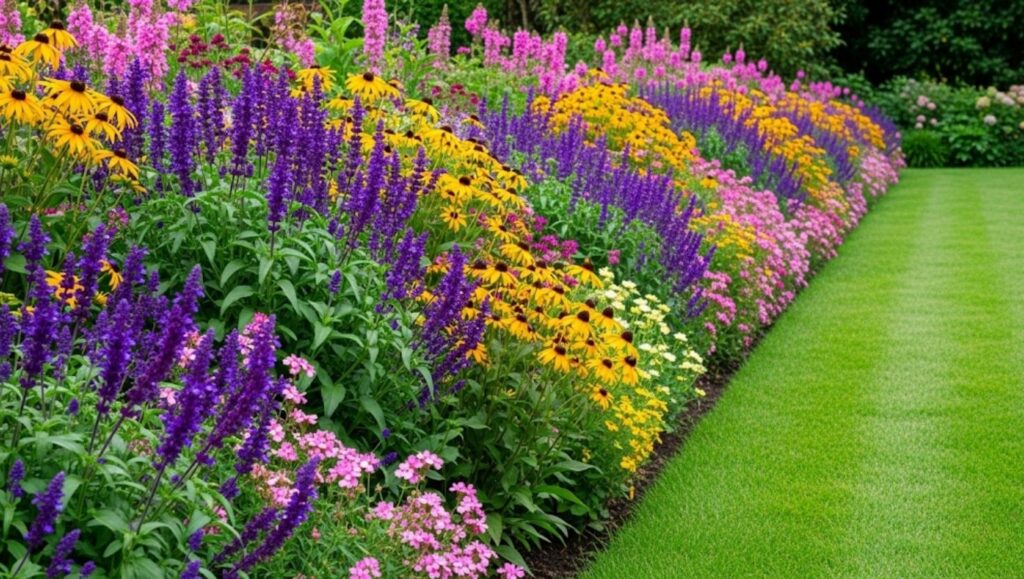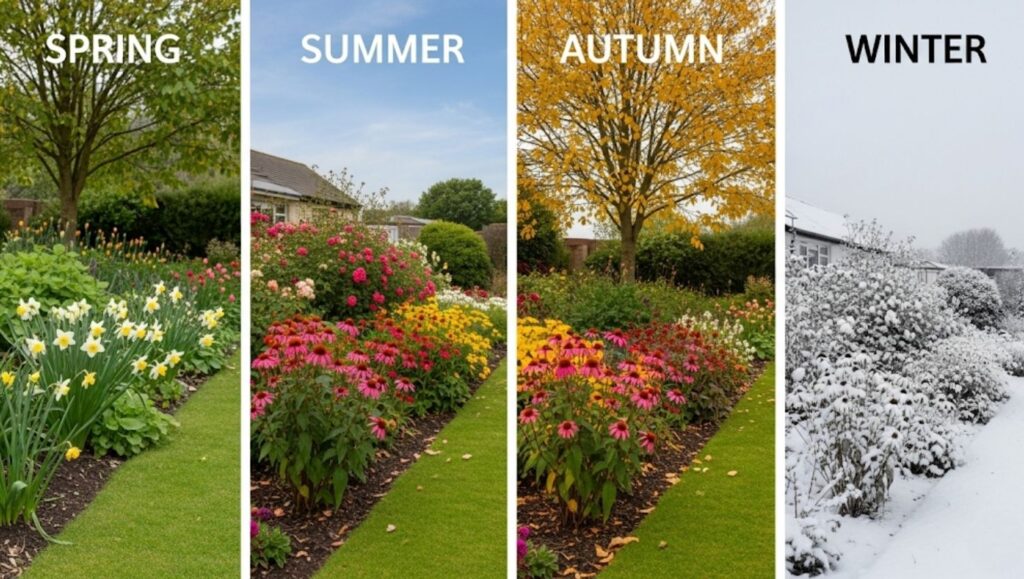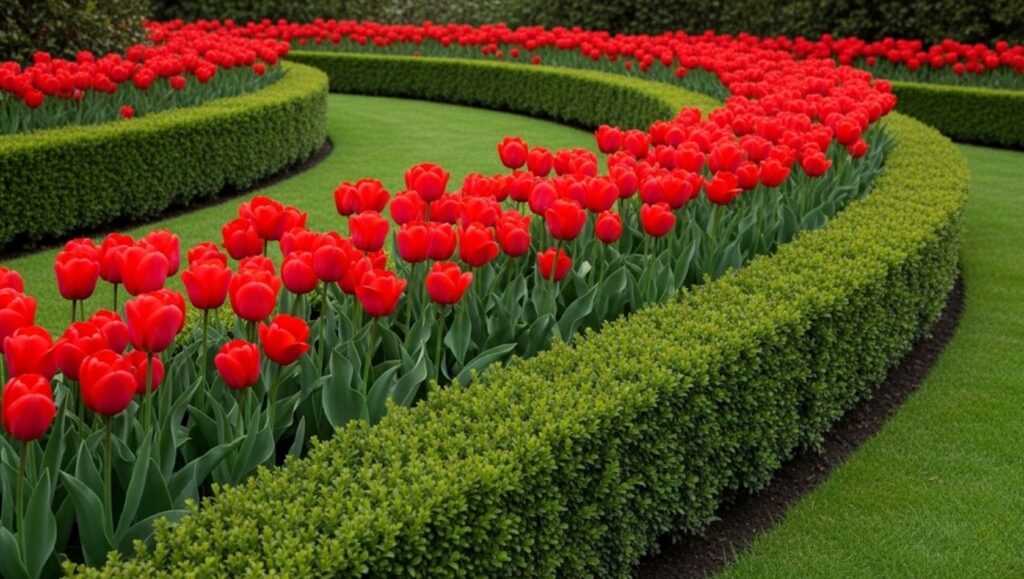Well-designed garden borders do more than just separate a lawn from a path or fence; they create structure, add depth, and provide a canvas for vibrant, year-round color. For homeowners looking to boost curb appeal or create a personal oasis, implementing effective border flower bed ideas is a foundational step in landscape design. From classic formal arrangements to relaxed cottage-style plantings, a thoughtfully planned border can transform the entire aesthetic of an outdoor space.

This guide explores eight distinct concepts for designing beautiful and functional garden borders, drawing on principles from horticultural experts and landscape professionals. These ideas offer solutions for various styles, sun exposures, and maintenance preferences.
The Classic Tiered Perennial Border
One of the most enduring border flower bed ideas is the tiered or layered approach. This technique creates a lush, full appearance by arranging plants according to their mature height. This method ensures every plant is visible and receives adequate light.
- Back Layer: Place the tallest plants, such as delphiniums, foxgloves, or ornamental grasses like feather reed grass (Calamagrostis), against the backdrop of a fence or wall.
- Middle Layer: Use medium-height perennials like coneflowers (Echinacea), phlox, and Shasta daisies (Leucanthemum × superbum). These fill the space and provide the bulk of the color.
- Front Layer: Position low-growing and mounding plants like catmint (Nepeta), cranesbill geraniums, or coral bells (Heuchera) along the edge.
“Layering by height is a fundamental principle of effective garden design,” notes a guide from the University of New Hampshire Extension. “It creates a natural visual flow and prevents smaller plants from being overshadowed.”
The Four-Season Interest Border
A common challenge is maintaining visual appeal outside of the peak summer months. A four-season border addresses this by incorporating plants that offer interest throughout the year, from spring bulbs to winter structure.
- Spring: Begin with early bloomers like daffodils, tulips, and crocuses, interplanted with emerging perennials.
- Summer: Rely on a succession of blooming perennial borders, including lavender, hydrangeas, and black-eyed Susans (Rudbeckia).
- Autumn: Introduce late-blooming asters, sedum ‘Autumn Joy’, and plants with brilliant fall foliage like Japanese maples or fothergilla.
- Winter: Focus on structure. Evergreen shrubs, the bark of dogwood trees, and the dried seed heads of ornamental grasses and coneflowers provide texture and form against the snow.

The Monochromatic or Limited-Palette Border
For a sophisticated and modern look, consider a border designed around a single color or a limited, analogous color palette (e.g., shades of purple, blue, and pink). This approach creates a serene and unified feel that is visually restful and impactful. A classic all-white garden border, for example, can be luminous at dusk.
Popular choices for a white garden include ‘Annabelle’ hydrangeas, white roses, baby’s breath (Gypsophila), and white astilbe. For a blue theme, consider a combination of delphiniums, salvia ‘May Night’, and grape hyacinth (Muscari).
The English Cottage Garden Border
The cottage style is characterized by its charming, informal, and densely packed plantings. It mixes perennials, annuals, herbs, and even vegetables in a seemingly random yet harmonious arrangement. This style is perfect for creating a romantic, inviting atmosphere.
Key elements include classic flowers like roses, hollyhocks, poppies, and daisies, often spilling over pathways. A functional and attractive landscape edging material, such as traditional brick or woven willow, can help contain the enthusiastic growth and maintain a tidy, if informal, look.
The Low-Maintenance Native Plant Border
For gardeners seeking an eco-friendly and less labor-intensive option, a border composed of plants native to your region is an excellent choice. Native plants are adapted to the local climate, soil, and rainfall patterns, meaning they typically require less water, fertilizer, and pest control once established.
“Using native plants not only simplifies garden maintenance but also provides vital food and habitat for local pollinators like bees and butterflies,” explains David Mizejewski, a naturalist with the National Wildlife Federation. Research local native plant societies or consult a university extension service to find species that will thrive in your specific area.
The Sun-Drenched, Drought-Tolerant Border
In areas with intense sun and infrequent rain, a drought-tolerant border is both beautiful and practical. This style often evokes a Mediterranean feel, relying on plants with silvery foliage and vibrant flowers that thrive in the heat.
Key plants include lavender, rosemary, Russian sage (Perovskia atriplicifolia), yarrow (Achillea), and succulents like sedum. Using gravel mulch instead of wood chips can help retain minimal moisture while preventing root rot and providing a clean, contemporary finish.
The Formal, Edged Border
In contrast to the cottage style, a formal border emphasizes clean lines, symmetry, and manicured shapes. This design is often seen in traditional and classical landscapes, using clipped hedges and precise landscape edging to create a strong sense of order.
Low, clipped boxwood or yew hedges are commonly used to frame beds filled with a limited variety of plants, such as mass plantings of a single type of rose or tulip. The key here is repetition and structure. This style requires more regular maintenance, such as trimming and pruning, to maintain its sharp, geometric look.

The Edible Border
Combine beauty and function by integrating edible plants into your flower beds. Many herbs, vegetables, and fruits have ornamental qualities that blend seamlessly with traditional flowers. This approach, sometimes called “foodscaping,” maximizes the productivity of your garden space.
Colorful Swiss chard, the feathery foliage of dill or fennel, and the deep purple leaves of some basil varieties add texture and color. Edging a border with compact herbs like thyme or chives is both attractive and convenient for the kitchen. Strawberry plants can serve as a delicious groundcover, while blueberry bushes can provide structure and four-season interest.
Ultimately, the most successful border flower bed ideas are those that reflect the gardener’s personal style while respecting the site’s conditions. As stated by the Royal Horticultural Society, a well-planned border “forms the backbone of a garden, providing it with structure and a framework for the seasons.” With careful planning, any border can become a stunning focal point of the landscape.
Expert-Approved Landscapes: 9 Creative Front Yard Garden Ideas for Beauty and Biodiversity
